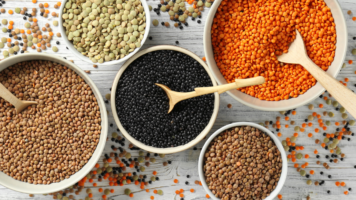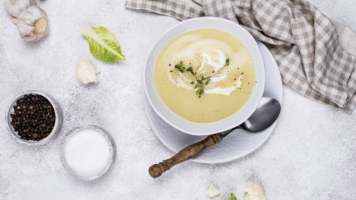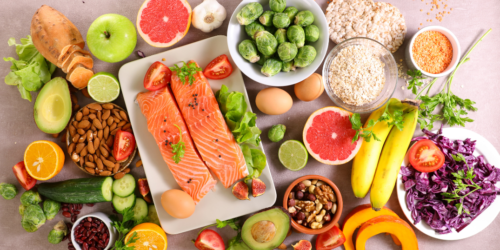(An article written in November 2011 and updated in February 2024)
The deficiency in the enzymatic activity of Diamine Oxidase (DAO) can cause different symptoms in our body which manifest through various signs.
To begin with, when a DAO deficiency is diagnosed, either with a blood test or with the genetic test that evaluates the AOC1 gene, the nutritionist can now prescribe a low-histamine and other amines (cadaverine, putrescine and tyramine) diet.
This dietary guideline is basic to avoid the appearance of symptoms (one of the main ones, migraine), because the DAO enzyme is needed to degrade histamine, and if we do not have enough, histamine accumulates and can produce all the mentioned symptoms.
Based on this diet, the nutritionist will decide at the same time if it is also necessary to provide a DAO enzyme dietary supplement to help absorb the little histamine that we ingest with food.
There are discrepancies about the criteria to follow considering or not considering a high histamine foods. Some authors propose eliminating from the diet those foods that present concentrations higher than 20 mg/kg, while others are much more demanding and consider low-histamine food levels those that contain lower amounts than 1 mg/kg. What is clear is that the symptomatological dose is much lower in patients with DAO deficiency than in sporadic histamine poisoning: 15-20mg and 150mg, respectively. This fact demonstrates a clear importance in prescribing a low histamine diet in patients with DAO deficiency.
Below is a table with the histamine content in foods:
| Food | Content (mg/kg) | Food | Content (mg/kg) | |
| Eggplant |
4,17-100,6
39,42 (30,66) (SD)
|
Mushrooms | ND | |
| Avocado | ND (but Tyramine levels were found) | Cured meats (ham) | nd – 10 | |
| Alcoholic beverages (red, white, sparkling wine, bottled beer) |
3,63 (5,86)
1,23 (2,47)
|
Fresh meat (beef, pork) | ND | |
| Chard | nd – 2 | Cured meats (bacon , chorizo, sausage, salami, fuet, sobrasada) | nd – 350 | |
| Cooked meat (York ham) | nd – 5 | Pasteurized milk | nd – 162 | |
| Champagne | 67 | Olives | ND | |
| Fermented white cabbage (Sauerkraut) | 43,74 (51,45) | Oily fish (semi-canned anchovies or herring) | ND-657,05 | |
| Spinach |
9,46-69,71
31,77 (17,02) (SD)
|
Fresh white fish | 1,14 (6,46) | |
| Wheat and rice flour | ND | Oily fish (fresh: tuna, sardine, mackerel or anchovy) | 3,27 (15,71) | |
| Semi-cured cheese | 33,1 (77,1) | Frozen fish | nd – 894 | |
| Fermented soy products | 73,95 (184,51) | White fish (frozen: cod and hake) | nd – 2 | |
| Emmental cheese | 10 – 500 | Tofu | ND | |
| Fresh cheese | nd – 5 | Citrus fruit | ND (but putrescine levels were found) | |
| Grated cheese | nd – 556,4 | Tomato (fresh, sauce) | 0,5 – 8 | |
| Packaged grated cheese | nd – 1071 | Pumpkin | ND (but putrescine levels were found) | |
| Roquefort cheese | 2000 | Egg | ND (but egg-white is considered histamine-release food) | |
| Yogurt | ND | Cider vinegar | 20 | |
| Legumes (lentils, chickpeas, beans and soy) | nd – 10 | Balsamic vinegar | nd – 4000 | |
| Raw milk | nd – 389,9 | Chocolate | ND (but putrescine and tyramine levels were found) |
A study published by Dr. Sonia Sánchez et al. reviewed the existing data on the contents of histamine and other biogenic amines in non-fermented plant-based foods, as well as their origin and evolution during storage or cooking. The authors of this research concluded that the exclusion of many plant foods from low-histamine diets is more likely due to high levels of putrescine or spermidine, rather than histamine. On the other hand, they emphasized the importance of the maximum freshness in foods, since histamine and other amines can continue to form during refrigerated storage. Likewise, they detailed that boiling vegetables is another interesting factor in these patients, since it can reduce the histamine and other amines content in food. Continuing along this line, this last finding was also described in the study carried out by Chung et al.; They observed that frying and grilling foods increased the histamine level, while boiling had little influence or even decreased it.
Another study elaborated in 2021, also carried out by Dr. Sonia Sánchez et al., it was determined that the presence of putrescine can interfere with the degradation of histamine by competition with the DAO enzyme at the intestinal level. This mechanism could explain why certain foods, for example citrus fruits and bananas, are also often kept out of stricter low-histamine diets.
For all these reasons, it is worth highlighting that low-histamine diets continue to require the attention of researchers, both to clarify the specific interaction with other amines in histamine metabolism and to elucidate the potential mechanisms of foods considered to release endogenous histamine.
If you want us to advise you in a personalized way, either in our Barcelona nutrition centre or by video conference from anywhere in the world, contact us and we will help you
Bibliography
Chung BY, Park SY, Byun YS, Son JH, Choi YW, Cho YS, Kim HO, Park CW. Effect of Different Cooking Methods on Histamine Levels in Selected Foods. Ann Dermatol. 2017 Dec;29(6):706-714. doi: 10.5021/ad.2017.29.6.706. Epub 2017 Oct 30. PMID: 29200758; PMCID: PMC5705351.
Sánchez-Pérez S, Comas-Basté O, Rabell-González J, Veciana-Nogués MT, Latorre-Moratalla ML, Vidal-Carou MC. Biogenic Amines in Plant-Origin Foods: Are They Frequently Underestimated in Low-Histamine Diets? Foods. 2018 Dec 14;7(12):205. doi: 10.3390/foods7120205. PMID: 30558197; PMCID: PMC6306728.
Sánchez-Pérez S, Comas-Basté O, Veciana-Nogués MT, Latorre-Moratalla ML, Vidal-Carou MC. Low-Histamine Diets: Is the Exclusion of Foods Justified by Their Histamine Content? Nutrients. 2021 Apr 21;13(5):1395. doi: 10.3390/nu13051395. PMID: 33919293; PMCID: PMC8143338.






